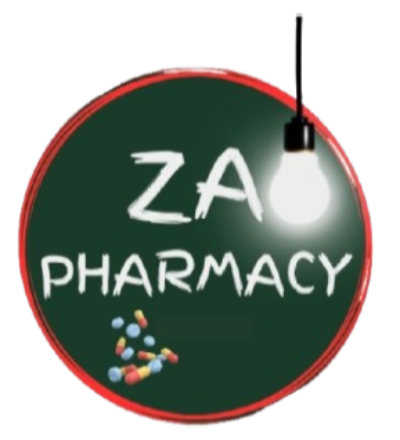Za Pharmacy
Drugs, Supplies and Delivery
Colchicine
Colchicine is a medication primarily used for the treatment and prevention of gout flares, as well as for the management of familial Mediterranean fever (FMF). It is known for its anti-inflammatory properties and its ability to reduce the pain and swelling associated with acute gout attacks. Colchicine is also used off-label for other inflammatory conditions. This article provides a detailed overview of colchicine, including its mechanism of action, uses, dosage, side effects, precautions, drug interactions, and generic names, referencing authoritative sources such as the British National Formulary (BNF), Lippincott Textbook of Pharmacology, and Lange Basic & Clinical Pharmacology.
Colchicine exerts its therapeutic effects through its action on microtubules and inflammatory pathways. Its key mechanisms include:
- Microtubule Disruption:
- Colchicine binds to tubulin, a protein that forms microtubules, inhibiting their polymerization.
- This disrupts the cytoskeleton of cells, particularly neutrophils, impairing their migration to sites of inflammation.
- Inhibition of Inflammatory Mediators:
- Colchicine reduces the production and release of inflammatory mediators such as cytokines and chemokines.
- It inhibits the activation of the NLRP3 inflammasome, which plays a key role in the inflammatory response.
- Reduction of Neutrophil Activity:
- By impairing neutrophil migration and function, colchicine reduces the inflammatory response in conditions like gout and FMF.
Colchicine is approved for specific clinical conditions, including:
- Gout:
- Treatment of acute gout flares.
- Prophylaxis of recurrent gout flares, particularly during the initiation of urate-lowering therapy.
- Familial Mediterranean Fever (FMF):
- Prevention of FMF attacks and associated complications, such as amyloidosis.
- Off-Label Uses:
- Treatment of pericarditis (inflammation of the pericardium).
- Management of Behçet’s disease.
- Prevention of post-operative atrial fibrillation.
The dosage of colchicine varies depending on the indication, patient response, and tolerability. The following dosing guidelines are based on the British National Formulary (BNF) and clinical pharmacology references:
- Acute Gout Flare:
- Adults: 1 mg initially, followed by 500 mcg every 2–3 hours until pain relief is achieved or until a maximum of 6 mg per course is reached. Alternatively, a lower-dose regimen of 500 mcg two to four times daily may be used.
- Prophylaxis of Gout Flares:
- Adults: 500 mcg once or twice daily, adjusted based on response and tolerability.
- Familial Mediterranean Fever (FMF):
- Adults: 500 mcg to 2 mg daily, adjusted based on response and tolerability.
- Children: 500 mcg to 2 mg daily, adjusted based on body weight and response.
Important Considerations:
- Colchicine is available in oral tablets.
- Dose adjustments may be necessary for patients with hepatic or renal impairment.
- Colchicine should be used with caution in elderly patients and those with comorbidities.
Colchicine is associated with a range of side effects, some of which can be serious. Common side effects include:
- Gastrointestinal:
- Nausea, vomiting, diarrhea, and abdominal pain.
- Hematological:
- Leukopenia, thrombocytopenia, and aplastic anemia (rare).
- Other:
- Muscle weakness and myopathy.
Serious Side Effects:
- Bone Marrow Suppression: Pancytopenia and agranulocytosis (rare).
- Rhabdomyolysis: Severe muscle breakdown, particularly in patients with renal impairment or those taking statins.
- Neurotoxicity: Peripheral neuropathy and myopathy (rare).
Colchicine requires careful monitoring and adherence to specific precautions to ensure patient safety:
- Renal and Hepatic Impairment:
- Dose adjustments are necessary for patients with impaired kidney or liver function. The dose should be reduced in patients with a creatinine clearance (CrCl) of less than 30 mL/min.
- Pregnancy and Lactation:
- Colchicine should be used during pregnancy only if the potential benefits outweigh the risks. It is excreted in breast milk, so breastfeeding is generally not recommended.
- Elderly Patients:
- Lower doses may be required due to increased sensitivity to side effects, particularly gastrointestinal and renal.
- Drug Interactions:
- Colchicine has a significant potential for drug interactions, particularly with medications that inhibit CYP3A4 and P-glycoprotein.
- Monitoring:
- Regular monitoring of blood counts and renal function is recommended, particularly in patients on long-term therapy.
Colchicine has a significant potential for drug interactions due to its metabolism via CYP3A4 and P-glycoprotein. Key interactions include:
- CYP3A4 Inhibitors:
- Macrolide antibiotics (e.g., clarithromycin), azole antifungals (e.g., ketoconazole), and protease inhibitors (e.g., ritonavir) can increase colchicine levels, increasing the risk of toxicity.
- P-Glycoprotein Inhibitors:
- Cyclosporine and verapamil can increase colchicine levels, increasing the risk of toxicity.
- Statins:
- Increased risk of myopathy and rhabdomyolysis when used with colchicine.
- Other Interactions:
- Digoxin: Colchicine may increase digoxin levels.
Warfarin: Colchicine may enhance the anticoagulant effects of warfarin
Colchicine is the generic name for this medication. It is marketed under various brand names, depending on the country and manufacturer. Some examples include:
- Colcrys (a well-known brand in the United States and other regions).
- Colchicine Accord.
- Colchicine Mylan.
Colchicine Sandoz

